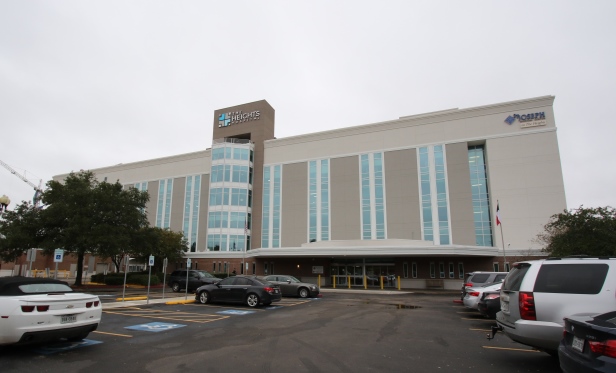 A $28 million first mortgage loan was collateralized by a 191,676- square-foot class-A medical office building.
A $28 million first mortgage loan was collateralized by a 191,676- square-foot class-A medical office building.
HOUSTON—The Heights is a historic section of the city, abundant in commercial amenities and popular with residents and visitors alike. Originally conceived in the late 19th century as Houston's first master-planned community, The Heights area has retained its historic character and neighborhood feel despite Houston's lack of official zoning restrictions.
Within this neighborhood, Madison Realty Capital closed a $28 million first mortgage loan collateralized by a 191,676-square-foot class-A medical office building. The borrower, a joint venture of two Houston-based medical office development firms, used a portion of the loan proceeds to refinance previous debt, and the remainder will be utilized for building renovations and tenant improvements within the property located at 1917 Ashland St.
“Medical office has been a bright spot in the Houston office market, and we were pleased to find a good opportunity to invest in this asset class,” Josh Zegen, co-founder and managing principal of Madison Realty Capital, tells GlobeSt.com.
The property is currently 95% leased to medical tenants, including St. Joseph Medical Center and CuraHealth. In addition to the main building, which serves a wide variety of patients and medical specialties, collateral for the Madison Realty Capital loan includes three noncontiguous but nearby land parcels that are currently used as parking for patients, doctors and staff.
“We continue to seek quality loan opportunities through our national platform, and this transaction is a great example,” said Zegen. “We believe there is considerable demand for medical office space both nationally and in the local submarket, and we're pleased to deliver financing in support of the borrower's business plan for the asset.”
A Transwestern study on the healthcare real estate sector indicates swelling demand for healthcare services may push forecasted demand for medical office space well above supply in several US markets. The report, “Medical Office Space Gets Tight,” based its predictions on the anticipated growth in healthcare workers through 2019 and compares average space usage per worker to space that now exists or is currently under construction in 14 markets.
“The segment of the population at or over the age of 65 is growing at a rate of 14 times faster than those aged 64 or younger,” said Jay Johnson, managing director of Transwestern healthcare advisory services. “A greater demand for healthcare services means more workers, and this is going to make healthcare space much tighter in some markets.”
Specifically, current projections estimate that slightly more than 150,000 healthcare practitioners will be added to the economy during the next two years, and total demand for medical office space across the US could range from 150.5 million to 225.8 million square feet by the end of 2019.
There was approximately 110 million square feet of available medical office space in existing and under-construction buildings in the US as of the second quarter of 2018, said Transwestern director of research and report author, Elizabeth Norton.
“If all healthcare practitioners added to the economy through 2019 aim to locate within medical office space, absorption of this demand is impossible without a major shift in how people expect and receive healthcare,” she observed.
© Touchpoint Markets, All Rights Reserved. Request academic re-use from www.copyright.com. All other uses, submit a request to [email protected]. For more inforrmation visit Asset & Logo Licensing.







